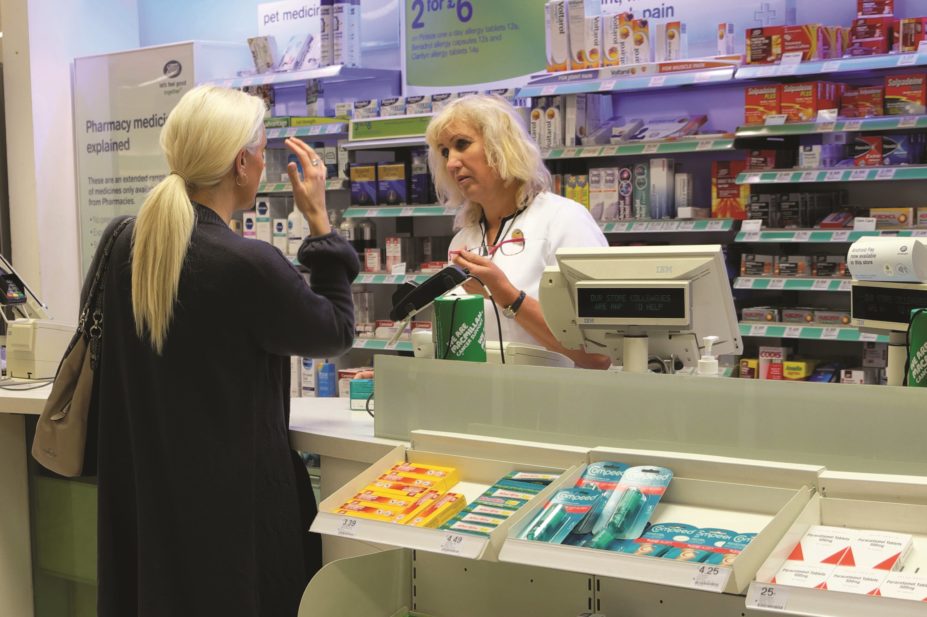
Alamy Stock Photo
One region in Wales had a pharmacist vacancy rate of 19%, the first community pharmacy workforce survey in the country has revealed.
Powys Health Board in central Wales reported that 19% of vacancies for community pharmacists went unfilled in 2019, with 55% of pharmacies in the area saying they had difficulties in recruiting. Almost half (48%) of pharmacies in Hywel Dda reported recruitment problems, as did 39% of pharmacies in the Betsi Cadwaladr Health Board.
Across all pharmacy staff, the survey found that there was almost one vacancy per pharmacy, with a mean vacancy rate of 0.9 full time equivalent (FTE) staff per pharmacy across all Welsh health boards.
The first Wales Community Pharmacy Workforce Survey gathered responses between 18 February 2019 and 2 April 2019 from all 716 community pharmacies in Wales, to provide a baseline dataset on the number and skills mix of the community pharmacy workforce as part of planning towards implementing
Pharmacy: Delivering a Healthier Wales.
Health Education and Improvement Wales, who published the survey report, said the data collected would contribute to the strategic planning of investment in commissioning and education for the pharmacy team, and the transformation of community pharmacy towards a more clinically orientated contract and away from volume-based dispensing services.
The survey revealed that there were 4,570 FTE staff providing public-facing community pharmacy services in Wales, and 6,607 staff by headcount. This included 1,084 pharmacists by headcount, with an FTE of 806.
The survey also found that just 3% (49) of the community pharmacist workforce in Wales were independent prescribers (IPs), equating to just one IP for every 15 community pharmacies. However, the report went on to say that because only 51% (25) of the independent prescribers were actively using their qualification, this meant that roughly one pharmacist for every 29 pharmacies was independently prescribing.
The report also contained a number of recommendations for the future of the community pharmacy workforce in Wales, which included that planning and modelling for primary care services in the Strategic Programme for Primary Care must include the community pharmacy workforce; and that health boards should “develop a local understanding” of recruitment difficulties in their area in order to produce mitigating strategies.
“The workforce survey has, for the first time, provided the robust intelligence and insight needed to plan for the future of the community pharmacy workforce in Wales,” said Elen Jones, director for Wales at the Royal Pharmaceutical Society.
“It comes at a critical time for community pharmacy, as the workforce continues to face the unparalleled challenges of the COVID-19 pandemic and as plans are progressed to deliver Pharmacy: Delivering a Healthier Wales, the vision for the future of pharmacy in Wales.”
Jones said the results demonstrated the scale and complexity of the task ahead in terms of sustaining community pharmacy workforce numbers and getting the skill mix right to deliver more patient-facing clinical services.
“The challenge of achieving the vision’s ambition of access to an IP in 30% of community pharmacies by 2022 is amplified by the survey, with only 1 IP currently practising in every 29 pharmacies,” she added. “These results also draw into focus the need to put clinical services in place to allow IPs to practise in community pharmacy.”
Jones added that the diagnostic and therapeutic training needs identified in the survey also highlighted the importance to the community pharmacy workforce of expanded clinical services, and “paved the way” for the future of community pharmacy education and training in Wales.
A spokesperson from Community Pharmacy Wales said: “We welcome the utilisation of the data to better reflect the shape of the ever developing community pharmacy workforce.”


